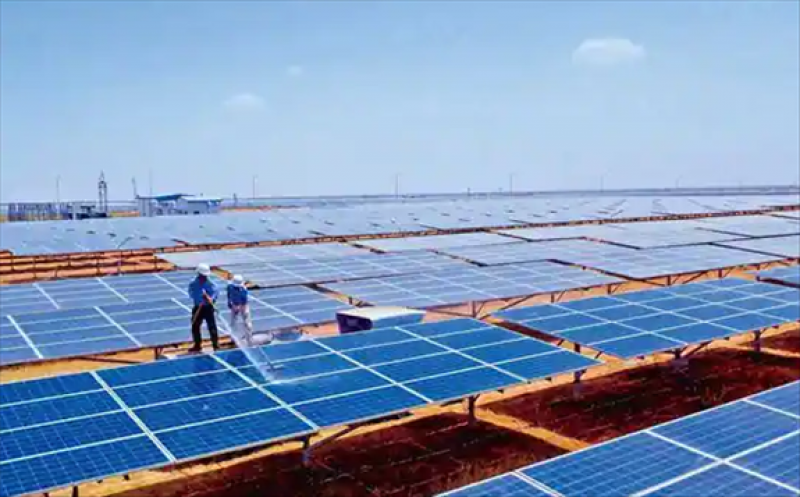India will call bids for the largest global tender for a 13 gigawatt-hours (GWh) grid-scale battery storage system in Ladakh in what would be a major leap in the country’s efforts to transition towards green energy.

The plan involves building 10GW of large green energy capacity in the region, comprising solar and wind projects, and using these large battery units to store the electricity generated to supply to the rest of the country through a transmission link, power, and new and renewable energy minister Raj Kumar Singh said in an interview.
“We will be a world leader in storage," Singh said. “We plan to generate 10GW of renewable in Ladakh. The transmission system that we are setting up, in that we are adding 13,000 megawatt-hours (MWh) of storage in Ladakh."
Large battery storages can help India’s electricity grids, given the intermittent nature of electricity from clean energy sources such as solar and wind. One GWh (1,000-MWh) of battery capacity is sufficient to power 1 million homes for an hour and around 30,000 electric cars.
There is growing traction for India’s playbook for developing a battery storage ecosystem, with Reliance Industries Ltd recently announcing plans to set up an advanced energy storage Gigafactory. The government also plans to call bids to build 4GWh of the grid-scale battery storage system at regional load dispatch centres. Also, state-run NTPC Ltd has floated a global tender for setting up 1GWh grid-scale battery storage system.
The project in Ladakh is part of India’s strategy to develop the strategic region. The reorganization of the erstwhile state of Jammu and Kashmir into two Union territories has given the Centre direct control over Jammu and Kashmir, and Ladakh. The Union government has been planning a raft of energy projects in the region to help supply electricity to the residents of Leh and Kargil districts, besides defence establishments during harsh winters.
Asked whether the decision was influenced by the strategic location of Ladakh, Singh said, “Our strategic intent is entirely the climate, the environment. We are world leaders in climate action. We will cement our position as world leaders in climate action. It will be green energy round the clock from Ladakh."
Mint reported earlier about a proposed 900km power transmission link from Ladakh to supply electricity across the country. Building the transmission line is considered a logistical challenge, considering the region remains snowbound for nearly six months with low oxygen levels.
“The cost of our transmission will come down to around 50%. Now, our energy will not be intermittent, and it will not be limited to the day. It will be 24X7," Singh said. The storage and transmission component of the project is expected to cost ₹34,000 crore.
Ladakh, Thar desert, Rann of Kutch, Lahaul and Spiti can potentially generate 315.7GW of solar and wind power. This will need investments of ₹43.7 trillion till 2050, according to a study conducted by Power Grid.
As part of its energy transition efforts, India is working towards the greening of electricity. According to the apex power sector planning body Central Electricity Authority (CEA), by 2030, the country’s power requirement would be 817GW, more than half of which would be clean energy. This huge injection of electricity in the grid from infirm sources such as solar and wind require a storage mechanism that can help balance the national electricity grid. According to CEA, there will be a need for a 27GW grid-scale battery energy storage system by 2030 with four hours of storage.